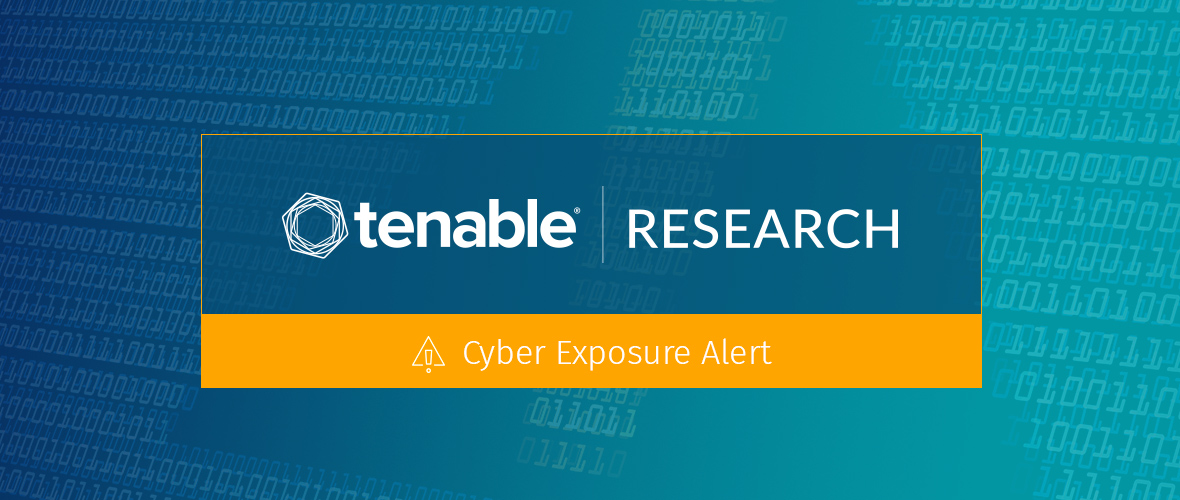AMNESIA:33: Researchers Disclose 33 Vulnerabilities Across Four Open Source TCP/IP Libraries

The vulnerabilities disclosed affect millions of Operational Technology, IoT and IT devices and include multiple remote code execution flaws.
Update October 11: The Identifying affected systems section has been updated with information on service detection plugins for the TCP/IP stacks mentioned in this blog post. Please note that some service detection plugins are not available due to low detection confidence in order to prevent false negative results.
Background
On December 8, researchers at Forescout published a report for 33 vulnerabilities that reportedly impact millions of devices. Dubbed AMNESIA:33, the vulnerabilities exist within four open TCP/IP libraries that are embedded in a number of Operational Technology (OT) and Internet of Things (IoT) devices as well as routers and printers. The four TCP/IP libraries affected by AMNESIA:33 include:
- uIP (integrated into Continki)
- FNET
- picoTCP
- Ethernut (Nut/Net)
Forescout estimates over 150 vendors that have implemented these libraries are affected by AMNESIA:33.
Additionally, the Cybersecurity and Infrastructure Security Agency (CISA) issued its own advisory for AMNESIA:33.
The 33 vulnerabilities include mostly Denial of Service and Information Leak vulnerabilities along with multiple remote code execution (RCE) flaws.
Analysis
The following is a breakdown of the 33 vulnerabilities, including the affected library, vulnerability type, common weakness enumeration, impact and CVSSv3 scores.
| CVE | Affected Library | Vulnerability Type | Common Weakness Enumeration | Impact | CVSSv3 |
|---|---|---|---|---|---|
| CVE-2020-13984 | uIP | Infinite Loop | CWE-835 | Denial of Service | 7.5 |
| CVE-2020-13985 | uIP | Integer Wraparound | CWE-190 | Denial of Service | 7.5 |
| CVE-2020-13986 | uIP | Integer Loop | CWE-835 | Denial of Service | 7.5 |
| CVE-2020-13987 | uIP | Out-of-Bounds Read | CWE-125 | Denial of Service, Information Leak | 8.2 |
| CVE-2020-13988 | uIP | Integer Overflow | CWE-190 | Denial of Service | 7.5 |
| CVE-2020-17437 | uIP | Out-of-Bounds Write | CWE-787 | Denial of Service | 8.2 |
| CVE-2020-17438 | uIP | Out-of-Bounds Write | CWE-787 | Denial of Service | 7 |
| CVE-2020-17439 | uIP | Improper Input Validation | CWE-20 | DNS Cache Poisoning | 8.1 |
| CVE-2020-17440 | uIP | Improper Input Validation | CWE-20 | Denial of Service | 7.5 |
| CVE-2020-24334 | uIP | Out-of-Bounds Read | CWE-125 | Denial of Service | 8.2 |
| CVE-2020-24335 | uIP | Out-of-Bounds Read | CWE-125 | Denial of Service | 7.5 |
| CVE-2020-24336 | uIP | Out-of-Bounds Read | CWE-125 | Remote Code Execution | 9.8 |
| CVE-2020-25112 | uIP | Out-of-Bounds Write | CWE-787 | Remote Code Execution | 8.1 |
| CVE-2020-17441 | picoTCP | Improper Input Valiation | CWE-20 | Denial of Service, Information Leak | 7.5 |
| CVE-2020-17442 | picoTCP | Integer Overflow | CWE-190 | Denial of Service | 7.5 |
| CVE-2020-17443 | picoTCP | Integer Overflow | CWE-190 | Denial of Service | 8.2 |
| CVE-2020-17444 | picoTCP | Out-of-Bounds Read | CWE-125 | Denial of Service | 7.5 |
| CVE-2020-17445 | picoTCP | Out-of-Bounds Read | CWE-125 | Denial of Service | 7.5 |
| CVE-2020-24337 | picoTCP | Infinite Loop | CWE-835 | Denial of Service | 7.5 |
| CVE-2020-24338 | picoTCP | Out-of-Bounds Write | CWE-787 | Remote Code Execution | 9.8 |
| CVE-2020-24339 | picoTCP | Out-of-Bounds Read | CWE-125 | Denial of Service | 7.5 |
| CVE-2020-24340 | picoTCP | Out-of-Bounds Read | CWE-125 | Denial of Service, Information Leak | 8.2 |
| CVE-2020-24341 | picoTCP | Out-of-Bounds Read | CWE-125 | Denial of Service, Information Leak | 8.2 |
| CVE-2020-17467 | FNET | Out-of-Bounds Read | CWE-125 | Information Leak | 8.2 |
| CVE-2020-17468 | FNET | Out-of-Bounds Read | CWE-125 | Denial of Service | 7.5 |
| CVE-2020-17469 | FNET | Out-of-Bounds Read | CWE-125 | Denial of Service | 5.9 |
| CVE-2020-17470 | FNET | Improper Input Validation | CWE-20 | DNS Cache Poisoning | 4 |
| CVE-2020-24383 | FNET | Improper Null Termination | CWE--170 | Denial of Service, Information Leak | 6.5 |
| CVE-2020-25107 | Nut/Net | Out-of-Bounds Read | CWE-125 | Denial of Service | 7.5 |
| CVE-2020-25108 | Nut/Net | Out-of-Bounds Write | CWE-787 | Denial of Service | 7.5 |
| CVE-2020-25109 | Nut/Net | Out-of-Bounds Read | CWE-125 | Denial of Service | 8.2 |
| CVE-2020-25110 | Nut/Net | Out-of-Bounds Read | CWE-125 | Denial of Service | 8.2 |
| CVE-2020-25111 | Nut/Net | Out-of-Bounds Write | CWE-787 | Remote Code Execution | 9.8 |
Remote Code Execution
Three out of the four TCP/IP libraries are affected by a RCE vulnerability, which means attackers could potentially execute code and gain full control over the devices.
CVE-2020-24336 is an out-of-bounds read vulnerability in the way the uIP library parses DNS records, as it does not perform any validation of the length field in the response, which could result in memory corruption.
CVE-2020-24338 is an out-of-bounds write vulnerability in the way the picoTCP library parses the domain name within DNS packets. Unlike CVE-2020-24336, which occurs when the uIP library attempts to read past the allocated memory buffer, CVE-2020-24338 occurs when the picoTCP library attempts to write past the allocated memory buffer, which could also result in memory corruption.
CVE-2020-25111 is an out-of-bounds write vulnerability in the Ethernut (Nut/Net) library due to multiple issues in the way the DNS handles queries and responses and lacks proper checks on null termination, data lengths and the number of queries and responses. Because of the lack of checks, these queries and responses may attempt to write past the allocated memory buffer, resulting in memory corruption.
DNS Cache Poisoning
In addition to the three RCE vulnerabilities outlined above, two of the libraries, uIP and FNET, are affected by DNS Cache Poisoning attacks. These are attacks that target the DNS cache, which stores requests made to certain resources locally to reduce latency. If an attacker is able to poison the cache, the next time a request is made to a legitimate resource (e.g. google.com), it would redirect the requester to a malicious resource (e.g. badwebsite.com) instead.
Denial of Service and Information Leak
The remaining flaws are primarily Denial of Service or Information Leak vulnerabilities.
Following in the footsteps of Ripple20 and URGENT/11
AMNESIA:33 follows in the footsteps of Ripple20 (disclosed in 2020) and URGENT/11 (disclosed in 2019).
Ripple20 is a set of 19 vulnerabilities in the TCP/IP library created by Treck, while URGENT/11 is a set of 11 vulnerabilities in VxWorks, a Real-Time Operating System (RTOS). Like AMNESIA:33, Ripple20 and URGENT/11 each reportedly affected millions of OT, IoT and IT devices.
Proof of concept
A section of the AMNESIA:33 report includes a proof-of-concept (PoC) for exploiting one of the three RCE vulnerabilities, CVE-2020-25111. At this time, no other PoCs have been shared publicly for the remaining vulnerabilities.
Solution
The researchers coordinated with the ICS-CERT and CERT/CC along with the Github Security team to attempt to address these vulnerabilities. According to the report, the following subset of the libraries received patches:
| TCP/IP Library | Fixed Version |
|---|---|
| FNET | 4.7.0 and later |
| uIP-Contiki-NG | 4.6.0 and later |
| picoTCP-NG | Contact for update |
| Nut/Net | 5.1 and later |
Additionally, open-iscsi, which implements some uIP code in its stack, has issued its own patches for it.
However, the original versions of uIP, Contiki and picoTCP did not receive patches as they have reached end-of-life.
CISA shares advisories from 13 vendors
In its own advisory, CISA shared advisories from the following 13 vendors that have implemented these TCP/IP libraries into their products:
- Devolo
- EMU Electronic AG
- FEIG
- Genetec
- Harting
- Hensoldt
- Microchip
- Nanotec
- NT-Ware
- Tagmaster
- Siemens
- Uniflow
- Yanzi Networks
Lessons learned from Ripple20 and URGENT/11
One of the overarching lessons learned from the disclosures of Ripple20 and URGENT11 is that the broad usage of open source TCP/IP libraries across a number of devices means that these vulnerabilities will persist for quite some time. The researchers collaborate with entities like ICS-CERT and the CERT Coordination Center (CERT/CC) to aid in the identification and notification process, but this is an extensive process. Knowing which devices are impacted will be a continuous effort, but if you’re a vendor that has implemented one of these libraries, it is imperative that you seek out the developers of those libraries and implement these patched versions immediately to protect your customers.
Identifying affected systems
Detection plugins for the TCP/IP stacks analyzed in the AMNESIA:33 report are available for Tenable customers. These detection plugins can be used to identify assets using these stacks within your network.
| Detection Plugin | Plugin ID | Detection Type |
|---|---|---|
| uIP/Contiki TCP/IP Stack | 149496 | HTTP Detection |
| Nut/Net TCP/IP Stack | 149497 | HTTP Detection |
| FNET TCP/IP Stack | 149498 | HTTP Detection |
A list of Tenable plugins to identify these vulnerabilities will appear here as they’re released.
Get more information
Join Tenable's Security Response Team on the Tenable Community.
Learn more about Tenable, the first Cyber Exposure platform for holistic management of your modern attack surface.
Get a free 30-day trial of Tenable.io Vulnerability Management.
- Vulnerability Management


